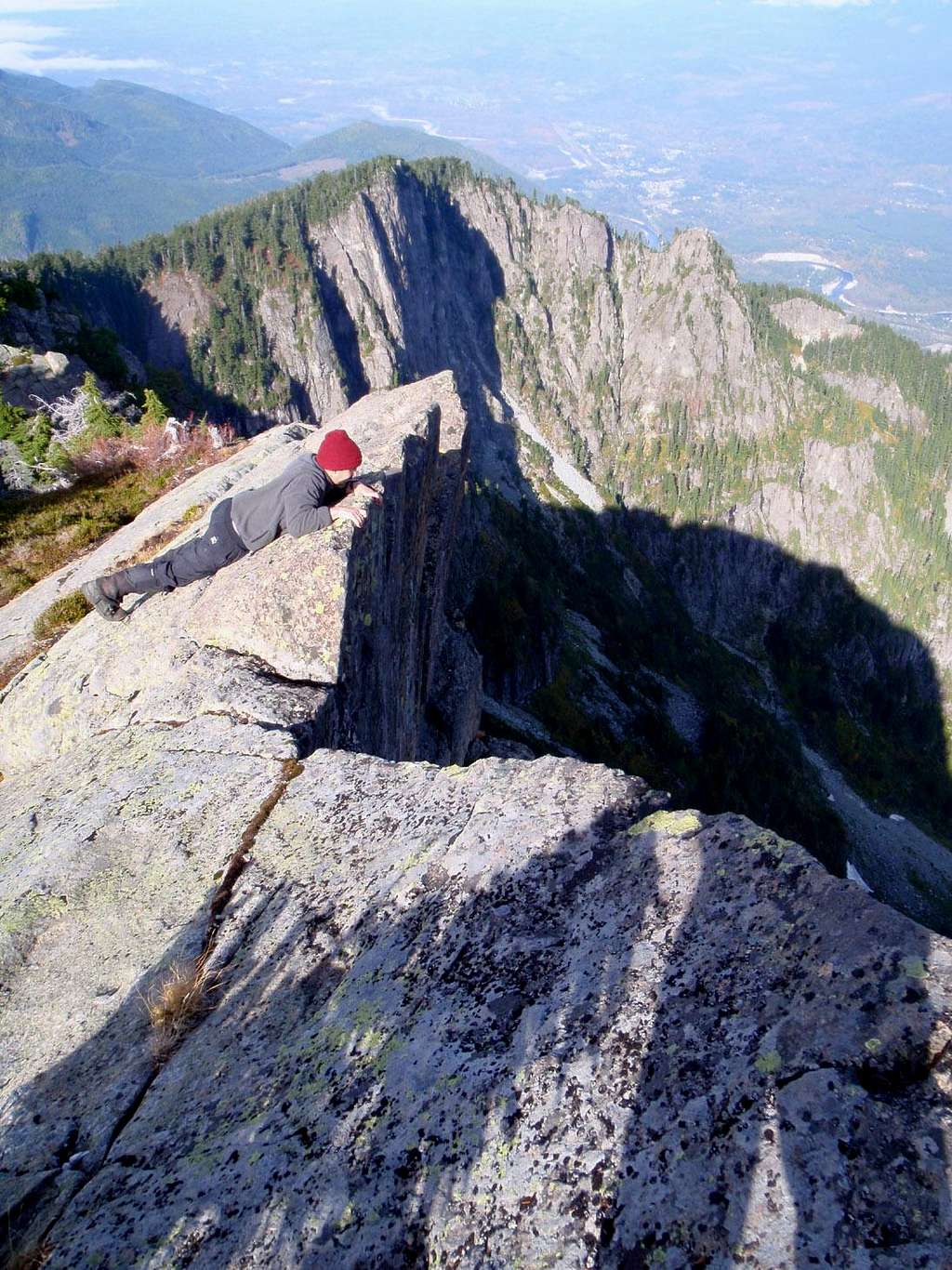JoelSkok - Jan 8, 2011 9:27 pm - Voted 10/10
Reminds me of the summit of PilchuckBoth have relatively benign south slopes but are sheer to the north
gimpilator - Jan 27, 2011 5:40 pm - Hasn't voted
Re: Reminds me of the summit of PilchuckThat's true. And that's the common trend for all mountains that are far north of the equator.
It's interesting because I just returned from South America and it was the opposite down there with the south faces being the sheer ones.
JoelSkok - Mar 3, 2011 9:13 am - Voted 10/10
Re: Reminds me of the summit of PilchuckHuh--then the warmer sides are more erosion resistent?....Interesting....I'll mull that one over awhile. Thanks for your observation.
JoelSkok - Mar 3, 2011 9:19 am - Voted 10/10
Re: Reminds me of the summit of Pilchuck.....Cooler (shadier) sides remain wet longer. Water running downslope is highly erosive. Freeze-thaw cycle pries yet more material off to be later carried away by water, avalanches or glaciers. What do you think?
gimpilator - Mar 3, 2011 11:08 am - Hasn't voted
Re: Reminds me of the summit of PilchuckIt's an interesting process for sure. Here's the way it was explained to me. In a time when glaciers were more prolific, the ice melted away on the southern slopes much sooner. But on the northern slopes where the ice was protected by the shade, it had literally ages more to cut away at the rock. You can still see this phenomenon on a lot of peaks today where the only remaining glaciers are on the steep northern faces.







Comments
Post a Comment